From Earth and across space, our telescopes continually image the Universe.

This multiwavelength view of the two largest, brightest galaxies in the M81 group shows stars, plasmas, and neutral hydrogen gas. The gas bridge connecting these two galaxies infalls onto both members, triggering the formation of new stars. Both galaxies are smaller and lower in mass than the Milky Way, but both house much more massive supermassive black holes than we do.
Beyond their scientific value, these images are visually alluring.
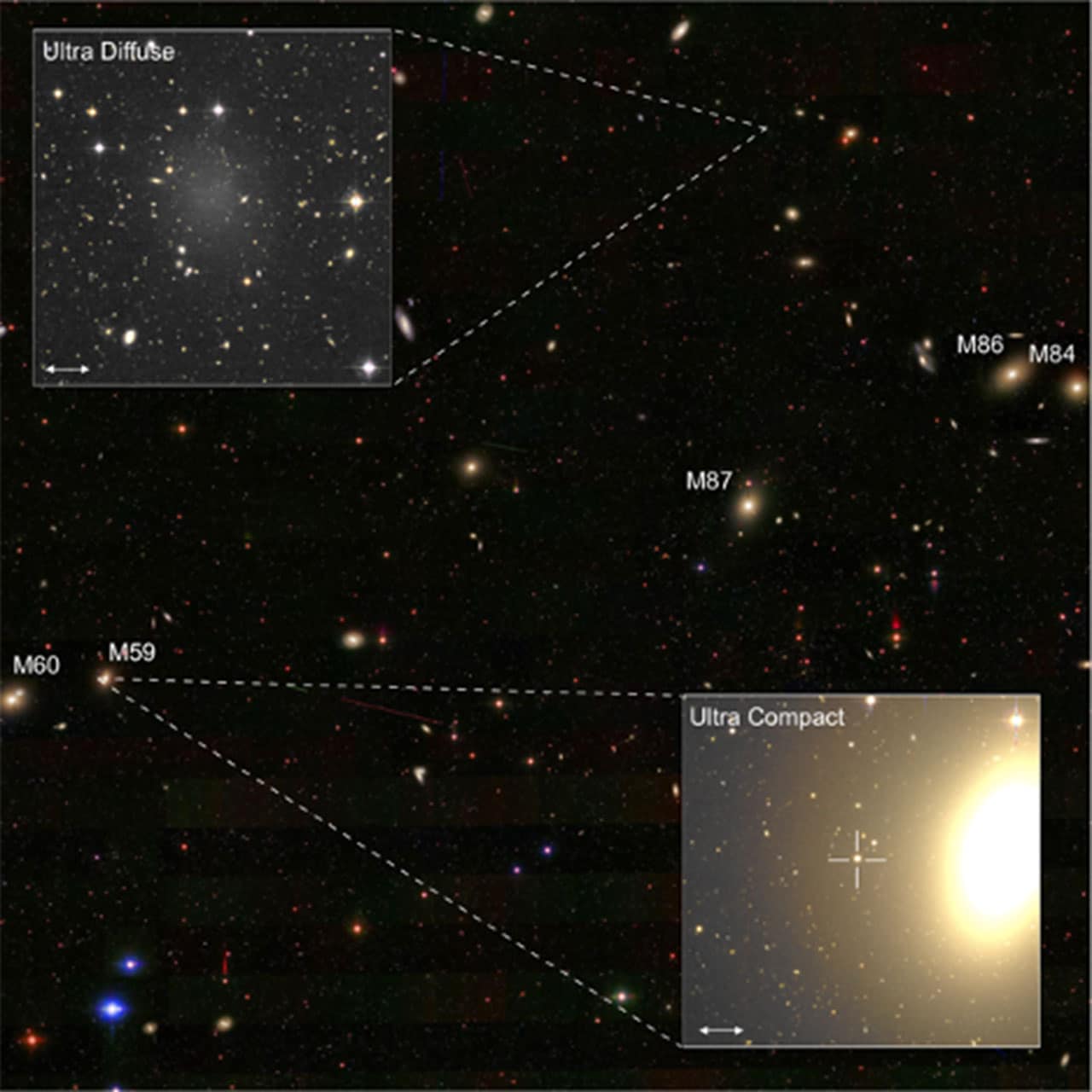
Galaxies, when we examine their stars inside, range from ultra-diffuse to ultra-compact, depending on where their stars are located. While some ultra-diffuse galaxies are rich in dark matter, we’ve now discovered both independent sets of dark matter-free ultra-diffuse galaxies predicted to exist. In this view of the Virgo Cluster, data from multiple ground-based observatories are combined to reveal features that no single observatory can reveal on its own.
They don’t, however, represent what the unaided human eye sees.
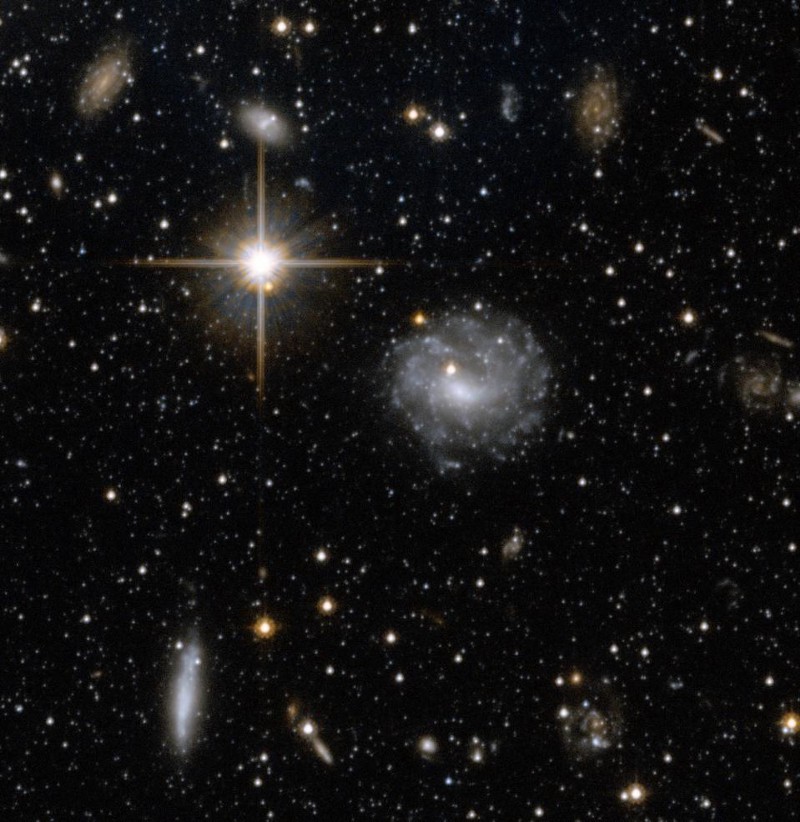
This image, perhaps surprisingly, showcases stars in the Andromeda Galaxy’s halo. The bright star with diffraction spikes is from within our Milky Way, while the individual points of light seen are mostly stars in our neighboring galaxy: Andromeda. Beyond that, however, a wide variety of faint smudges, galaxies in their own right, lie beyond. Individual stars can be resolved in galaxies up to tens of millions of light-years away, but that represents only one-in-a-billion galaxies overall. This image showcases both the power and limitations of Hubble.
Hubble, for instance, often includes ultraviolet and infrared light: information invisible to humans.
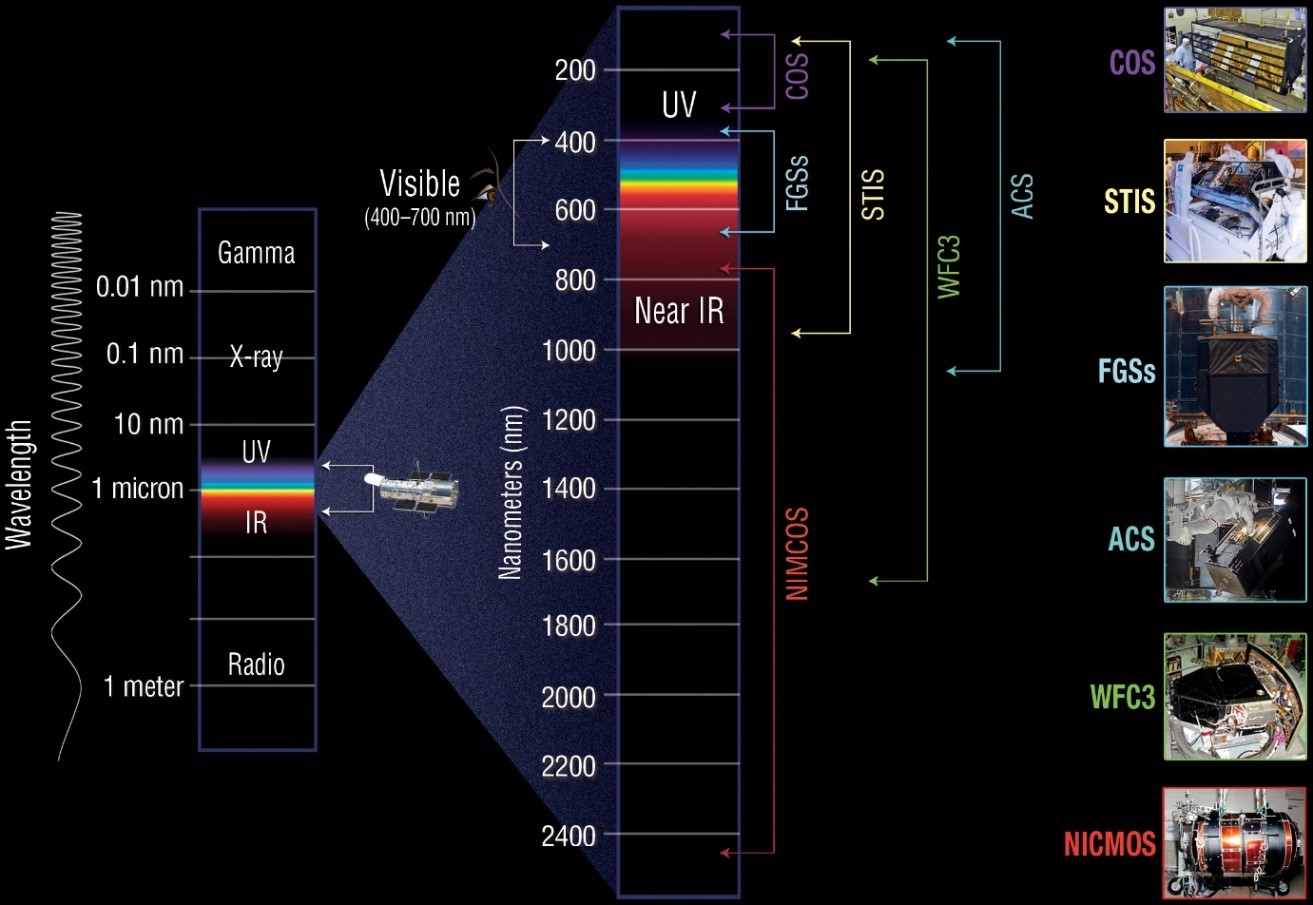
Hubble’s scientific instruments analyze different types of light ranging from ultraviolet (UV) to infrared (IR). This graphic shows which wavelengths each instrument studies, out to a maximum wavelength of just over 2 microns (2000 nanometers). Beyond that, thermal noise dominates, making meaningful observations impossible.
Observations from ALMA occur in radio light, and must be “translated” into human vision.
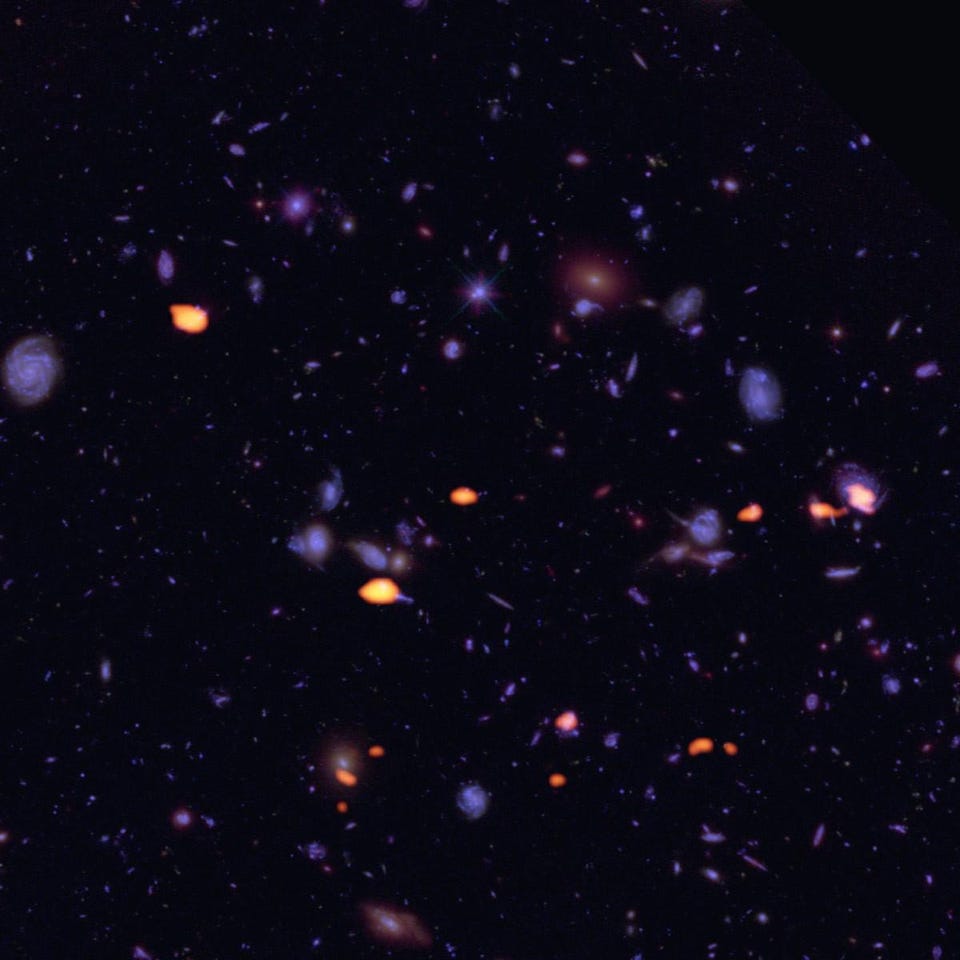
Looking back through cosmic time in the Hubble Ultra Deep Field, ALMA traced the presence of carbon monoxide gas. This enabled astronomers to create a 3-D image of the star-forming potential of the cosmos. Gas-rich galaxies (imaged by ALMA) are shown in orange, whereas Hubble’s details are shown in violet. You can clearly see, based on this image, how ALMA can spot features in galaxies that Hubble cannot, and how galaxies that may be entirely invisible to Hubble could be seen by ALMA.
Similarly for X-ray observatories, like Chandra, we assign colors to visually interpret the data.
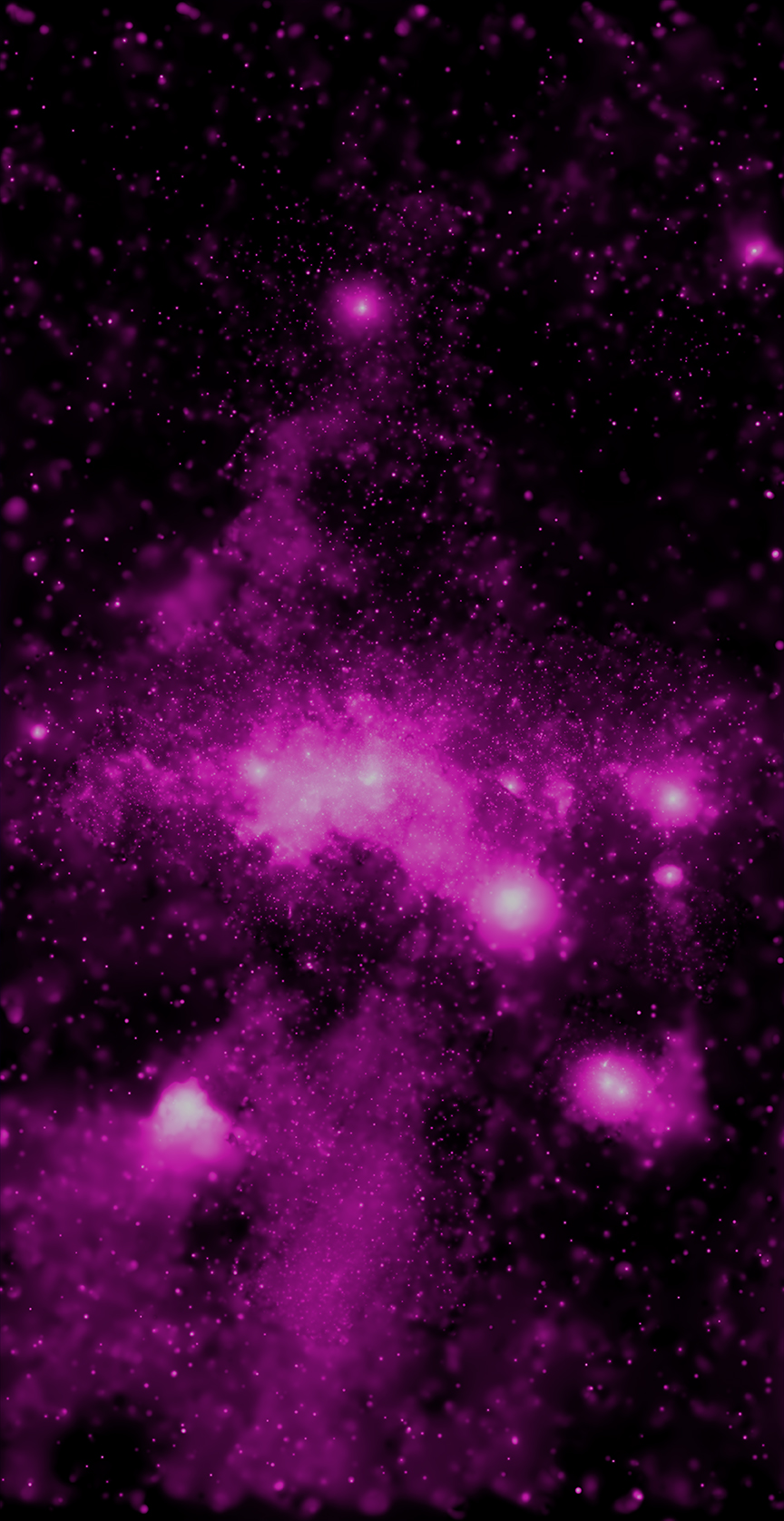
Black holes, pulsars, superheated gas, and magnetic fields can all be identified from their X-ray signatures in images of the galactic center. As taken with the Chandra X-ray observatory, this image showcases many of those features.
JWST images, although spectacular, have a variety of algorithms for assigning colors.

This image shows the region of study of the JWST Advanced Deep Extragalactic Survey (JADES). This area includes and contains the Hubble eXtreme Deep Field and reveals new galaxies at record-breaking distances that Hubble could not see. The colors on JWST images are not “true color” but rather are assigned based on a variety of choices.
Images unveiled by various collaborations frequently leverage different color palettes.

This region of space, viewed first iconically by Hubble and later by JWST, shows an animation that switches between the two. JWST reveals gaseous features, deeper galaxies, and other details that Hubble cannot see. Remarkably, the “foreground star” imaged by Hubble with the bright diffraction spikes actually turns out to be a binary system: a detail uniquely resolvable by JWST. The colors chosen for these images do not represent “true” color in any way, and differ between JWST images dependent on which collaboration’s algorithms are used to colorize it.
From even a visual inspection, however, there is one key to identifying JWST images.

This composite blinker image was constructed by rotating our first view from the White House release of JWST’s first science image and pasting it atop the previous Hubble image. The number of new features revealed are spectacular, but the difference between the Hubble pattern of diffraction spikes and the new JWST pattern is clearly visible for the foreground Milky Way star above the center of the image.
That key is the pattern of diffraction spikes that appear around point sources, such as stars.

JWST’s diffraction spikes, seen in great detail around the star 2MASS J17554042+6551277, are the same spikes seen in the first successful alignment image. The science data, as evidenced by the glorious detail of background galaxies, has helped revolutionize what we know about the Universe in, thus far, under one full year of science operations.
Whereas many observatories, like Hubble, produce “diamond spike” patterns, JWST’s spikes are unique.
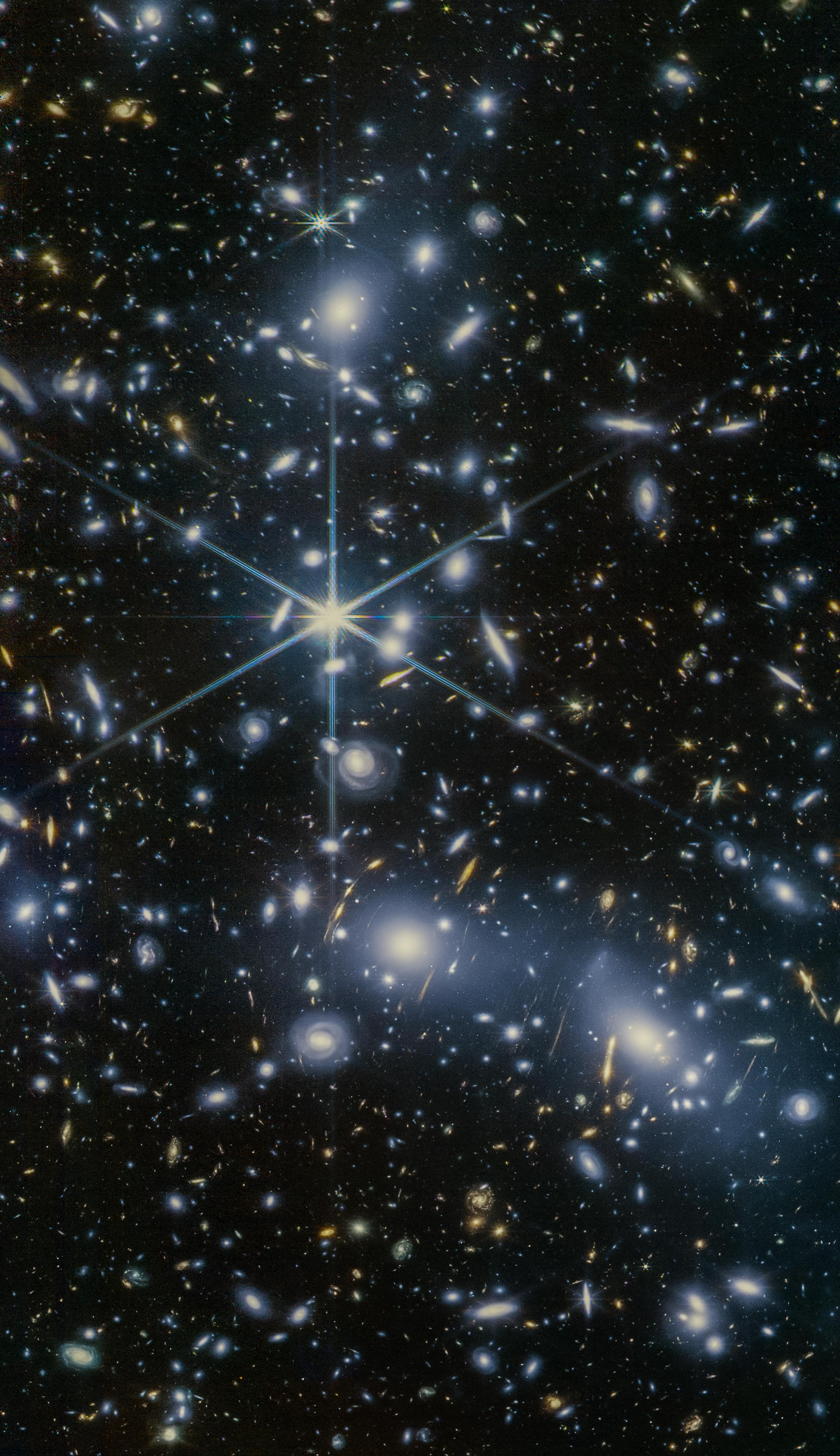
This view of two of the three main foreground cluster components of Pandora’s Cluster, Abell 2744, are “separated” on the sky by the lone bright foreground star within the Milky Way in this field of view. Even with just a selection of filters applied to this, the intracluster starlight and several thousand galaxies are on full display here, as is JWST’s unique spike pattern for bright point sources.
There are six large spikes and two smaller spikes to every bright point source in JWST images.

This remarkable image of features in the direction of the Large Magellanic Cloud was a “bonus freebie,” taken in parallel mode while the NIRISS instrument was being used to observe a small nebula in the Large Magellanic Cloud. In MIRI’s field of view just happened to be an asymptotic giant branch (AGB) star in the process of losing mass, exhibiting the characteristic 8-spiked pattern unique to JWST images.
This includes:
- active black holes in the MIRI images,

The MIRI view of Stephan’s Quintet showcases features that cannot be seen at any other wavelength. Its topmost galaxy – NGC 7319 – harbors a supermassive black hole 24 million times the mass of the Sun, which the MIRI instrument overexposes to reveal the characteristic JWST diffraction spike pattern. It is actively accreting material and puts out light energy equivalent to 40 billion Suns. MIRI sees through the dust surrounding this black hole to unveil the strikingly bright active galactic nucleus.
- foreground Milky Way stars in deep NIRCam images,
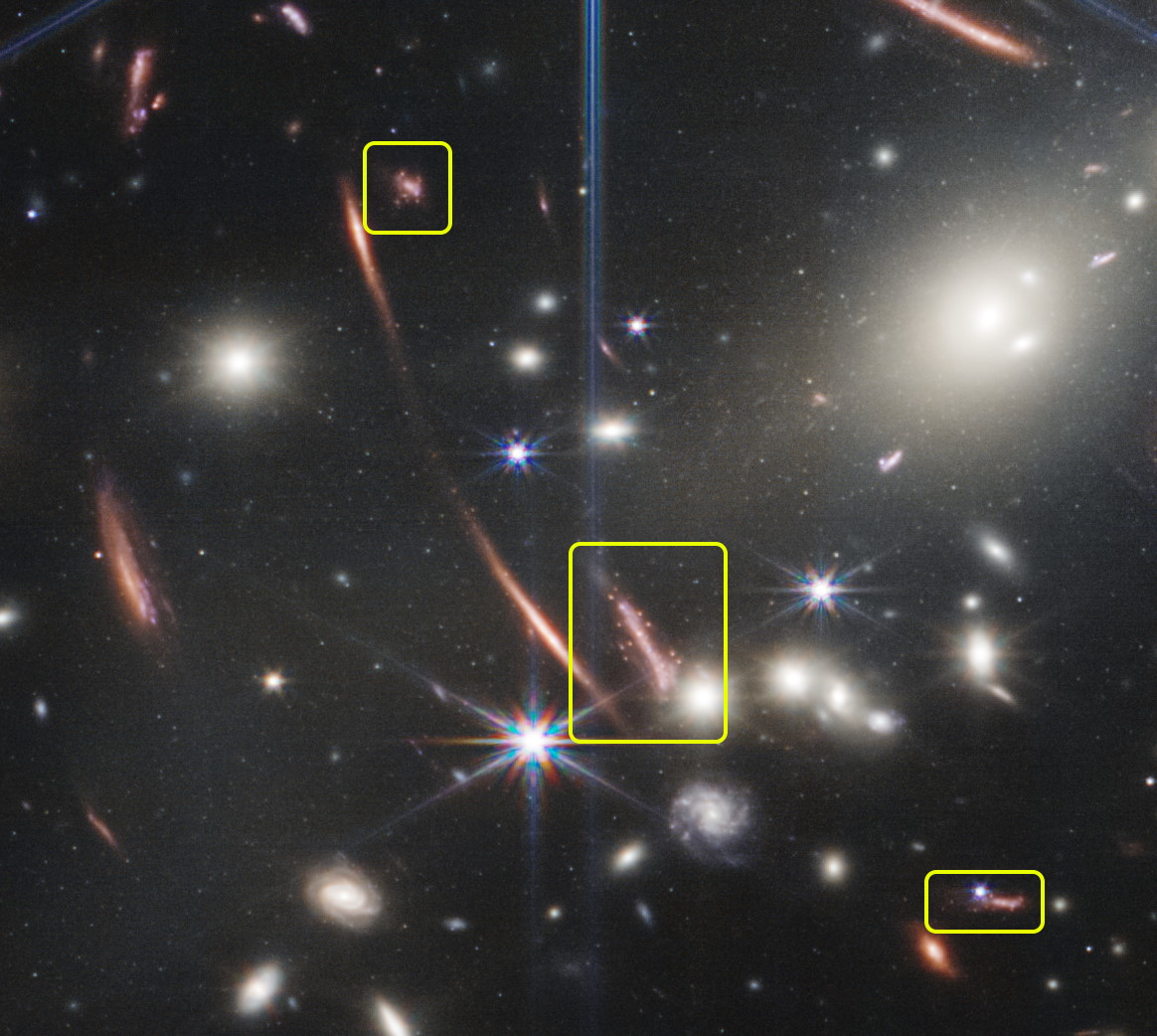
This NIRCam view of a selection of the gravitationally lensed region surrounding galaxy cluster SMACS 0723 contains multiple lensed galaxies, including the thrice-appearing Sparkler galaxy, highlighted here. The “sparkles” have been identified as star-forming knots of gas appearing atop already-existing globular clusters. Below the left-center of the second image of the Sparkler galaxy, a foreground star within the Milky way shows the characteristic diffraction spike pattern for JWST.
- and even bright moons within planetary systems.
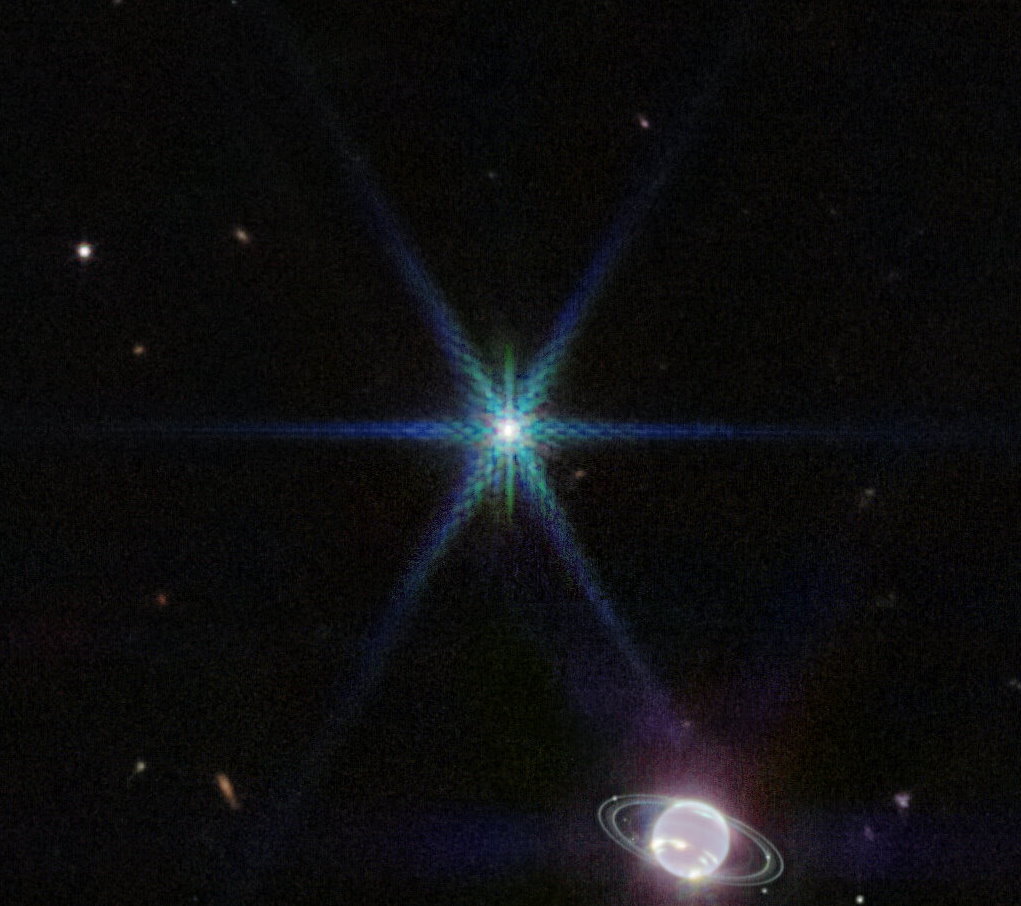
This portion of JWST’s NIRCam image of Neptune focuses on its giant moon, Triton. Appearing blue in this assigned color image, Triton brightly reflects the near-infrared light emitted by the Sun to the tune of ~70%. By comparison, Neptune only reflects a tiny fraction of the incident sunlight in the infrared, as methane, one of Neptune’s primary components, is a spectacularly successful infrared absorber. The eight-spike pattern unique to JWST is clearly visible around Triton.
The honeycomb-patterned hexagonal mirrors, plus the three main support struts, are the culprits.

The point spread function for the James Webb Space Telescope (JWST), as predicted back in a 2007 document. The four factors of a hexagonal (not circular) primary mirror, composed out of a set of 18 tiled hexagons, each with ~4 mm gaps between them, and with three support struts to hold the secondary mirror in place, all work to create the inevitable series of spikes that appear around bright point sources imaged with JWST. This pattern has been affectionately called the “nightmare snowflake” by many of JWST’s instrument scientists.
Originally called the “nightmare snowflake,” these beautiful spikes are JWST’s telltale signature.

This rather silly annotation of the bright star at the center of JWST’s first alignment image showcases that although the six brightest hexagonal spikes cannot be avoided, the central diffuse light from the point source and the spurious striations coming out of the weaker 7th and 8th spikes (stemming from one of JWST’s struts) could potentially be improved. This 8-spiked pattern, with six large and two smaller spikes, is unique to JWST’s configuration.
Mostly Mute Monday tells an astronomical story in images, visuals, and no more than 200 words.
"image" - Google News
June 19, 2023 at 01:00PM
https://ift.tt/0YLQ9si
The trick to instantly identifying JWST images - Big Think
"image" - Google News
https://ift.tt/qydJRlC
https://ift.tt/pRiCmZu
Bagikan Berita Ini

















0 Response to "The trick to instantly identifying JWST images - Big Think"
Post a Comment